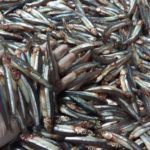Catfish are an incredibly nutritious food source and can be prepared in a multitude of delicious ways. As a self-proclaimed fish enthusiast, are you confident that you know all the different types of catfish? Today, we will introduce you to the most common catfish species found in Vietnam.
1 What are Catfish?
Catfish belong to a group of ray-finned fish, characterized by their lack of scales and very slippery skin. They are found throughout Asia and Europe, and their classification is based on distinct skull and swim bladder features.
 What are Catfish?
What are Catfish?
Economically, catfish are a significant source of income, with applications in food production and recreational sport fishing.
In Vietnam, catfish are diverse in number and variety, with notable species including: tra fish, basa fish, bong lau fish, and ngat fish. These fish are typically prepared in stews, soups, or hot pots and are favored for their affordable price, tasty flavor, and high nutritional value.
2 Types of Catfish
Ngat Fish
 Ngat Fish
Ngat Fish
Ngat fish are identified by their large heads and four barbels. Their tails resemble those of eels, either pointed or blunt at the tip. Notably, some species of ngat fish possess venomous spines that can be dangerous to humans if punctured.
This fish is also a valuable food source and economic resource, particularly for farmers in the Mekong Delta region of Vietnam.
Tra Fish
 Tra Fish
Tra Fish
Tra fish are one of the most common catfish species in Vietnam, recognized by their large, laterally flattened heads. They have wide mouths, with a grayish color on the upper body and a black underside.
Tra fish thrive in freshwater or brackish water environments and can tolerate temperatures ranging from 15°C to a maximum of 39°C. Their flesh has a pinkish-red hue, and they are often used to make a delicious dried fish delicacy.
Tre Fish
 Tre Fish
Tre Fish
There are four types of tre fish: golden tre, white tre, hybrid tre, and tre phi. They are commonly found in freshwater environments, near ponds and lakes. Tre fish have large mouths, small eyes, and four barbels. Their coloration varies, with shades of brown, yellow, gray, or black, depending on the species. They are a valuable food source, providing essential nutrients and minerals beneficial to human health.
Keo Fish
 Keo Fish
Keo Fish
Keo fish are characterized by their long, cylindrical bodies and flattened tails. The upper body is black, while the underside is slightly yellow. They have numerous teeth, and their small eyes are positioned close to the top of the head. Keo fish are commonly used in hot pots, soups, and
Basa Fish
 Basa Fish
Basa Fish
Basa fish are distinguished by their short, flattened heads, with eyes and mouths positioned asymmetrically. Their bodies are wide and laterally compressed. The upper body is greenish-brown, while the underside is white. Basa fish are popular in food preparation due to their small, easily separable bones and high nutritional value.
Chach Fish
 Chach Fish
Chach Fish
Chach fish are predominantly found in freshwater or brackish water habitats. In Vietnam, they are mainly distributed in Dong Thap and An Giang provinces. These fish typically grow to about a hand’s length, with plump bellies and pointed heads. There are three types of chach fish: ricefield chach, snakehead chach, and mud chach, with the ricefield chach being the most abundant.
Hu Fish
 Hu Fish
Hu Fish
Hu fish are a familiar sight in Vietnamese cuisine. They have slender, elongated bodies with rounded bellies. The upper back is dark grayish-black, while the underside is a milky white. Hu fish are commonly used in sour soups and hot pots, adding a delightful flavor to these dishes.
Bong Lau Fish
 Bong Lau Fish
Bong Lau Fish
Bong Lau fish inhabit brackish water environments near coastal areas, where freshwater and seawater mix. During their breeding season, they migrate to freshwater regions of the Mekong River. They have green backs, white bellies, and yellowish fins.
Nheo Fish
 Nheo Fish
Nheo Fish
Nheo fish have slightly flattened heads and a total of six barbels. Their size varies, ranging from 8 cm to 3 meters in length. Different types of nheo fish include: European nheo, Aristotle’s nheo, and Amur River nheo. Unlike other catfish species, nheo fish are more commonly kept as ornamental fish rather than being consumed as food.
Vo Fish
 Vo Fish
Vo Fish
Vo fish have flattened heads, and their size can vary significantly. Their bodies are long and gradually taper towards the tail. They have small teeth and four barbels. Vo fish are also commonly used in various culinary preparations.
Chinh Fish
 Chinh Fish
Chinh Fish
Chinh fish are becoming increasingly rare due to overfishing. They have black bodies, with round, elongated shapes, typically growing to about 40-50 cm in length. Their flesh is flavorful and nutritious, containing high levels of protein.
Loach
 Loach
Loach
Loaches have an average length of 20-40 cm, with some individuals reaching up to 1 meter. Their bodies are cylindrical and elongated, with a continuous dorsal fin that connects to the caudal and anal fins. Loaches are highly valued in aquaculture due to their economic importance and high nutritional content.
Tren Fish
 Tren Fish
Tren Fish
Tren fish are commonly found in the Mekong Delta region, particularly in the Tien and Hau rivers. Their bodies curve downwards, and their flesh is renowned for its sweet, rich, and fatty flavor.
Chot Fish
 Chot Fish
Chot Fish
In Vietnam, there are three common types of chot fish: striped chot, buffalo chot, and paper chot. The paper chot has a flattened body, a small head, and a blunt snout, with four pairs of barbels. The striped chot has a gray body and three black stripes running from the operculum to the caudal peduncle.
Lang Fish
 Lang Fish
Lang Fish
Lang fish prefer freshwater and brackish water habitats, and they are commonly found in ponds and lakes with abundant silt. They have slender, elongated bodies covered in a layer of slippery mucus. Lang fish have a single dorsal fin and a series of adipose fins surrounding it.
Dua Fish
 Dua Fish
Dua Fish
Dua fish play a significant role in the agricultural sector of several Vietnamese provinces. Their flesh is known for its sweet, firm, and fatty texture. They are used in various culinary preparations, including a popular dried fish delicacy.
We hope you found this overview of common catfish species in Vietnam informative and interesting. Don’t forget to check out our other articles for more fascinating insights!






































